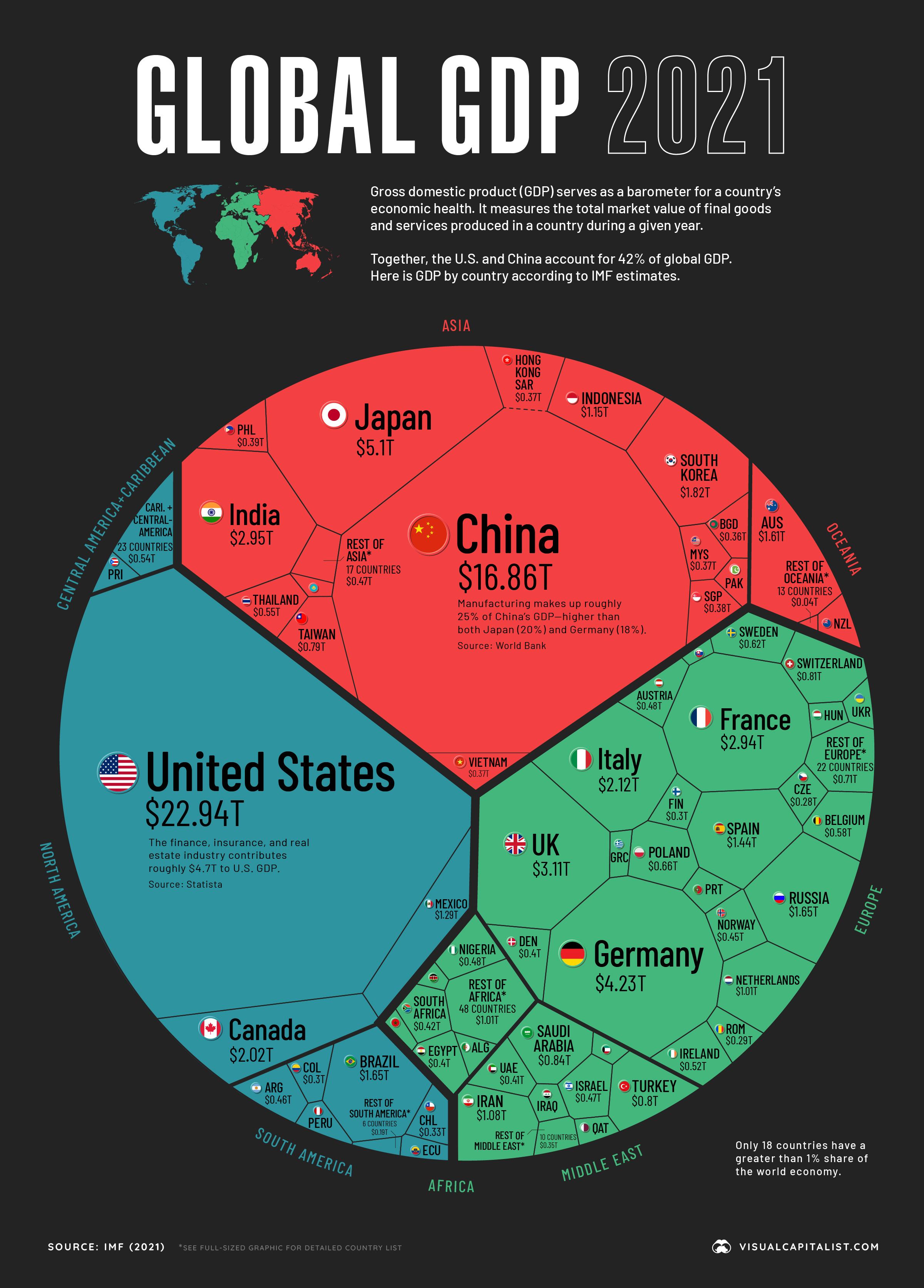the newspaper
Engineered / Designed for Your GLOBAL PR Publish company news every month Publish a blog every month Publish your SPECIAL REPORT Publish HELP WANTED every month Tell your BRAND story
’22 hardest year to run a company
Why it matters: Uncertainty, CEOs’ dreaded nemesis, abounds. Supply chain snarls, lingering COVID disruptions, labor shortages, inflation, rising pay and soaring demands for new benefits and work flexibility are driving up costs and complexity.
- Toss in a surge in individuals starting their own small businesses — and others simply quitting work altogether — and you see why c-suite anxiety is spreading fast.
What they’re saying: “After two years of them sitting at home getting well-paid, seeing their stock appreciate — yeah, this year is going to be more challenging,” says Lisa Shalett, CIO of Morgan Stanley Wealth Management.
- “They’re struggling to find their way,” particularly around workforce challenges, said Ted Bililies, managing director at AlixPartners, who works with CEOs and boards.
The Great Resignation is forcing companies to raise wages and beef up benefits to try to attract talent.America has some 11 million open jobs, but people aren’t jumping to apply to them.
- The median tech salary in the U.S. increased 7% between 2020 and 2021, per Wired. And some companies are driving pay more aggressively: Amazon just hiked up its maximum base pay to $350,000, from $160,000.
- Less-sexy industries, like manufacturing and autos, are having an even harder time attracting talent, Bililies said.
Yes, but: Plenty of companies, especially the big ones, have been able to pass those higher costs, and a bit more, on to consumers who keep spending. Profit margins in 2021 were at historic highs.
- And even though doing business is harder now, many CEOs are paid millions of dollars to deal with this stress.
Smaller businesses, however, face different challenges. They don’t always have the resources to raise wages — child care centers, already operating on razor thin margins, are struggling to find workers and aren’t necessarily able to raise pay.
- And juggling the ever-changing landscape of vaccine and mask mandates can be difficult. “There’s confusion,” said Jeffrey Zuckerman, the CEO of Main St. Events, which organizes trade shows around the country.
Inflation and supply chain issues are driving up the cost of doing business, irrespective of the ways the workforce is changing.
- The year-over-year change in costs for companies on the S&P 500 is at 13.4%, the highest it’s been in a decade, according to research Shalett released earlier this week.
- “In my 24 years in the business I’ve never seen anything like it, not even close,” Heineken CEO Dolf van den Brink told the FT yesterday, about inflation. “Across the board we are faced with crazy increases.”
Firms are also realizing they’ll have to navigate remote and hybrid work even after the pandemic. That means figuring out new ways to manage teams and rally employees.
- 61% of remote workers say they’re working from home because they’re choosing not to go into the office, while just 38% say they’re staying out of the workplace because it’s closed or unavailable, per a new Pew Research report.
- So CEOs are scrambling to bring in talent experts who can answer questions about the future of work. Human resources job postings on Indeed are up 133% compared with February 2020.
- But “CHROs [chief human resources officers] are tired,” says Lars Schmidt, founder of Amplify, an HR consulting firm. In the past two years, companies have faced a pandemic, a crisis of burnout, social justice demands, and remote work — and “all those things center on the people function,” Schmidt says.
- As a result, many burned-out HR professionals are joining the Great Resignation themselves. Schmidt recently surveyed 280 U.S.-based CHROs, and 47% of them had left the jobs they had in January 2020, with many leaving HR entirely.
The bottom line: 72% of CEOs worry their jobs aren’t going to survive the challenges ahead, according to a survey AlixPartners released at the end of 2021. That number is up from 52% the year before.
News Source: AXIOS Feb 18’22 axios.com
… it’s a new world … and did you know … CALIFORNIA’s GDP is between GDP of Germany and GDP of India?

72% CEOs worry about losing their jobs due to disruptions facing their industries
Axios business editor Kate Marino writes from a survey out today from the global consulting firm AlixPartners.
- Why it matters: That’s a jump of 20 points from a year ago, when 52% of CEOs told AlixPartners they were anxious about job security.
What’s happening: The frenetic pace of change in businesses and the world has accelerated during the pandemic — spiking CEO anxiety.
- 94% of the executives said their business models need to change within the next three years — but 57% fear their company isn’t adapting fast enough.
Zoom in: Overhauling global supply chains for today and the future, and reimagining recruitment and retention while skills needs change rapidly, were top of mind for CEOs this year.
- That’s while digital transformation reshapes the workflow for companies — and even the disruptors get disrupted, AlixPartners CEO Simon Freakley told Axios.
Between the lines: CEOs are paid hundreds of times the average worker’s wages to worry more than the rest of us.
source: AXIOS
RETAINING
MOBILE
EMPLOYEES
Here’s why you need
to clarify expectations
and set priorities
By Olivier Meier and Anne Rossier-Renaud
Mercer
The “great resignation” is making headlines all over the world.
The causes and scale of this phenomenon, first seen in the United States and now reaching many other countries, still need to be fully explored.
However, the headlines highlight the fact that many employers now face a real battle to retain skilled talent.
This challenge stems from the impact that COVID-19 has had on the health and mental and social well-being of employees.
As a result, many people are reconsidering their priorities and employment choices and thinking about how they might enjoy a better lifestyle.
In addition, unlike in previous crises, the pandemic has not led to high unemployment. Companies are therefore struggling to attract and keep key talent.
This is putting upward pressure on salaries and leading to a renewed focus on the quality of the employee experience.
Needs of the mobile workforce
One key issue that must be taken into account when looking at this global challenge is the experience of the “mobile workforce.”
Vague promises made by management about being able to “work from anywhere” have raised the expectations of this much-in-demand group of mobile employees, in terms of their work setups, the support they receive and the overall experience they have when out on international assignments.
If mobile employees are not to be lost as part of the great resignation, companies will require a better understanding of both the issues that affect them and their employment expectations. Companies will also have to set clear priorities to deliver effective support programs for all their mobile assignees.
Defining:
mobile employee X
The mobile employee experience is the sum of two main things:
- The interactions of the individual with all the stakeholders linked with their assignments
- Their perception of the services and assignment support they receive
In other words, it is the mobile employee’s “customer experience.”
Several aspects of this experience have to be taken into consideration:
- The experience on assignment
- The experience before and after the assignment
- The experience of any accompanying family member
- The experience of the receiving business units/local peers
Perception
versus
reality
Assessing the mobile employee experience gives some cause for optimism: Mercer’s recent Internationally Mobile Employee Experience report finds that seven out of ten companies rate the experience of their international assignees as positive or very positive. There is also no reason to doubt the goodwill of human resource (HR) teams and the strength of the efforts they make to support mobile assignees.
However, the report also shows that there is need for caution. It finds that only a minority of companies capture detailed metrics relating to assignees’ experiences before, during or post-assignment. Instead, many rely purely on anecdotal evidence. For a number of organizations the definition of what constitutes a “successful” assignee experience also remains vague: 38% have no clear definition. What’s more, the link between assignee experience and diversity, equity and inclusion (DEI) indicators is mentioned by only 7% of respondents.
| How does your company define assignee experience success? | (Multiple answers are possible) |
|---|---|
| Assignee retention post-assignment | 40% |
| We have no clear measurements | 38% |
| Reported assignee feedback | 35% |
| Assignment completion | 35% |
| Supports career progression | 32% |
| Satisfactory DEI (diversity, equity and inclusion) indicators | 7% |
| Other | 7% |
Source: 2021 Internationally Mobile Employee Experience Survey. Mercer
This shows that companies have a limited perception of the experiences of their mobile employees. They therefore risk:
- Mis-reading the general mood of their mobile employees
- Missing issues affecting specific assignee groups
- Ignoring the long-term value (or absence of value) of mobility for employees
The absence of data can also lead to unsubstantiated or false assumptions about employee needs and knee-jerk reactions to perceived trends and buzzwords.
Support and
communication issues
Given these risks, a detailed analysis of the mobile employee experience is important. Such an analysis can highlight practical issues or problems that mean mobile employees do not get the support they need. It can also reveal more subjective problems related to the expectations of employees, who feel that their experiences, and the support they receive, fall short of what they were promised.
Such expectation issues can be triggered by implied promises in vague policies, misleading discussions with line managers who ignore company mobility guidelines, and comparisons with assignees from other companies (which, although largely irrelevant, can still have a big impact on employees’ thinking).
Even when good assignee support initiatives are in place, it is important to remember that this does not mean that employees and line managers are aware of them, or that they truly understand what options are available. It is safer to assume that any communication about this type of support needs to be strengthened and regularly re-emphasized, so that the message gets through.
Setting
priorities
When asked about their priorities to improve the experience of mobile assignees, HR professionals mention issues related to coordination and talent management, flexibility and personalization, as well as practical support.
| What are the top priorities to enhance assignee experience? | (Multiple answers are possible) |
|---|---|
| Connect current assignment experience to greater career development | 66% |
| Improve communication about available employee support | 47% |
| Improved internal coordination between stakeholders | 46% |
| International remote working (e.g. working from another country than the assignment location) | 28% |
| Customiation of assignment packages based on each employee’s individual priorities | 28% |
| Introduction of more custom interactions (customized treatment/personal vs. automated interaction) | 25% |
| Enhanced diversity, equity and inclusion (DEI) benefits, ensuring all employees are considered | 22% |
| New technology implementation | 22% |
| Increase benefits relating to employee health and wellness | 20% |
Source: 2021 Internationally Mobile Employee Experience Survey. Mercer
We have highlighted a number of key areas where improvements can be made: Integration and coordination, flexibility and diversity, technological support and well-being benefits.
Integration and
coordination
All too often, mobility is managed in isolation without clear reference to long-term talent and career management goals (in other words, it is not an integrated experience.) Mobile employees and teams may discuss some of these issues with their talent management peers, but this is not enough. Making progress requires integrating mobility with the entire talent management cycle — from talent management and recruitment to long-career management post-assignment.
A lack of connection between talent management and mobility makes it difficult to assess the outcome of assignments. An assignment may appear successful at first glance, but then turn out to be a failure if the assignee resigns after repatriation, or if the workforce in the receiving business unit did not benefit from any skill or knowledge transfer.
More generally, a strong connection between stakeholders and HR teams is needed to deliver a good mobility experience. A company may have the right policies in place for its mobile employees, but if these policies are not applied consistently at the local level, mobile staff will not be supported effectively. As a result, the company’s talent mobility activities will not be as successful as they might have been.
Flexibility and
the gaps in diversity
The idea of providing more flexibility and personalization in mobility programs has progressed over the past few years.
- Flexibility can relate to compensation packages for mobile workers (e.g. swapping benefits or exchanging them for lump sums). It can also relate to new work setups (e.g. remote working).
- Personalization allows companies to meet the needs of a diverse mobile workforce. This is key, as an organization can be successful with some assignees but fail to meet the needs of specific groups that require different types of support. Such groups include single parents, minorities, older employees or assignees with disabilities. A lack of personalization in the support provided to mobile employees can therefore hinder diversity progress in this part of the workforce.
Practical support:
technology and
well-being benefits
The use of people management technology has increased during the COVID-19 crisis, as have the expectations of employees about the use of such technology. Integrated mobility management tools and platforms are an enabler of new forms of mobility and facilitate transparency and effective communication.
Robust tracking and mobility management tools make it much easier to implement international remote working and to put flexible solutions in place. A lack of these tools and platforms is a source of inefficiency — it also prevents international HR teams from working effectively in an emergency.
Health is another key issue for mobile employees. Highly mobile employees can face a wide range of health problems. Their well-being is also affected by less visible factors such as stress, financial problems and various other work-related issues. These problems can manifest themselves in demotivation, family issues and, ultimately, failed assignments.
Most organizations support their mobile employees with comprehensive reward and relocation packages. However, they sometimes fail to take a holistic approach to employee well-being and therefore miss the full range of problems such employees can face.
Checking the need
to act
Improving employee experience is a long process and, while short-term wins are possible, companies should not rush to make large changes to existing policies without checking the evidence to see if there is a pressing need to act.
Before addressing an issue, HR teams should check:
- If more contextual information is available, i.e. what has prompted assignees and managers to mention an issue?
- If the company should act, or if it’s the responsibility of the employee to solve the problem, i.e. is the issue assignment related or not?
- Should the issue be handled just by making an exception?
- If the solution should involve adding more flexibility to an existing policy or changing it.
- What the long-term costs and consequences of the envisaged solution will be.
HR teams should guard against developing complex solutions that are not needed and which would be difficult to communicate and implement.
Improving the experience of mobile employees should be an ongoing exercise supported by a rigorous process of analysis.
The objective of any action should be to develop a more holistic approach to supporting international assignees — one that includes the assignee’s entire family, their long-term career evolution, and their overall well-being.
HR teams should be provided with the tools they need to support mobility effectively.
TOP EXECS TALK LEADERSHIP
Dr David Weiss (Toronto), Global HR exec Ken Somers (New England), and Steven Howard, author of 21 books on “Leadership” (Mexico City)
InterFace™ STEVE CADIGAN
brought to you
and
brought to the world
by these cosponsors

MARK NAIDICZ
Executive-in-Residence at Marquette University
Becoming GLOBAL VOICES 4 Change
InterFace™ ELIZEBETH VARGHESE
InterFace™ GAYLE GLEW, Director – Global Relocation & Corporate Services, First Team Relocation
InterFace™ MARK BICOCCHI
Senior Manager – Global Mobility – HILTON
InterFace™ IRMA V BALIAN
Intercultural Consultant | Leadership | Corporate Protocol & Diplomacy

1-ROOM schoolhouse returns


TOP-LEVEL
HR
LEADERS
SEXIST ?
DEFINING WELL-BEING in the WORKPLACE

“Average Mortgage Size sets record; home prices KEEP CLIMBING. Mortgage rates increased across the board last week following the recent rise in Treasury yields, higher due to inflation pressure and increased expectations of higher interest rates.“ (source: CNBC)
SAY NO
New Year resolutions
Learning to say no is the single most effective way to increase your focus and decrease your stress. Think about all those activities you’re saying yes to that consume resources and leave you feeling depleted.
We have to learn to say no to the things that don’t matter and don’t give us joy so that we can say yes to the things that will make us more productive and happier.
A Story From the Trenches
I never tell my coaching clients to do something that I’m not willing to do, so let me tell you a story about how I recently said no to something that in the past I may have said yes to.
Someone reached out to me and asked me to coach an executive who was failing miserably in his job. The client wasn’t 100 percent sure this guy would make it, so they asked if they could cancel the contract halfway through our engagement if enough progress weren’t being made.
I thought about their request, as this would have been a prestigious company on my client list, and then I said no. I knew working with this guy would take up a lot of my energy, and I wasn’t willing to put my reputation on the line just to make a few bucks.
The following week, I secured a new coaching engagement with a senior leader, who has all the makings of an outstanding executive. The work is exciting, and I’m having a great time watching my client soar.
I now have the capacity to take on additional clients, whereas I probably wouldn’t have been able to had I agreed to the first coaching request.
Here are Ten Ways for Saying No To People Making Demands on Your Time
It’s hard to say no, especially if you’re a people pleaser. Here are some ways to help you get to protect your time.
- I’d love to, but I can’t.
- Sorry, but I simply don’t have any more capacity.
- I’m not the right person for this assignment.
- I’m overscheduled as is.
- I’m unable to take on any new projects right now.
- I’m afraid I can’t make this work.
- I’m flattered that you asked. However, I’m going to have to decline.
- My bandwidth is low, so I won’t be able to make it work.
- I would if I could, but I can’t.
- No.
Don’t Feel Obligated to Always Offer an Explanation.
Of course, there will be times, like when your boss asks you to take on more work when you’re already overbooked, that an explanation will be necessary. However, in many situations, no reason is required.
Offering an excuse might seem like the polite way to decline a request, but doing so could backfire.
Here are some examples:
- You decline a request to meet for coffee because you’re unavailable on the day they suggested. You tell them this, and they ask you what day works best for you.
- You tell a co-worker that you cannot help them with a project because you’re working towards a major deadline. They say no problem. They can adjust their deadline to meet your schedule.
- You get one of those “pick your brain” requests from someone in your network who wants to grab an hour of your time. You say you don’t have an hour, and they respond by telling you 30 minutes will do.
Saying no—especially when it’s uncomfortable to do so—is one of the most powerful steps you can take to create the kind of life you wish to lead. Create your boundaries and remember that you’re not responsible for someone else’s reaction.
Your success rides on your ability to say yes to the things that matter most to you,
and you won’t be able to do this until you learn to say no.
Download my newest book, Can We Talk? Seven Principles for Managing Difficult Conversations at Work, to help you prepare for difficult conversations at work, including the ones where you have to say no.
Schedule a call with me to receive my special holiday offer of a FREE month of coaching, when you sign up and pay for coaching services by December 31, 2021.
Here’s to learning to say no and a great New Year!!!
source: Roberta’s Talent Maximizer®
More US natural gas shipped to Europe (liquified natural gas) in January than the amount that flowed through Russian pipelines, making US a bigger supplier first-time, according to IHS Markit. “Before pandemic, US was largest producer of oil / gas. US is a large exporter; average 2.6 million oil barrels/day the past 4weeks; 4.2 million barrels of refined products, including gasoline and diesel fuel, according to Energy Information Administration weekly data.” (source: CNBC)
|
|
“One of the highlights of 2021 has been the thrill of making new friendships with amazing people. Whether you are a volunteer, caregiver, research scientist, a professor, or a patron, it has been our privilege to partner with you in making a meaningful difference in the lives of those that already have enough to think about. Ed Cohen is one of those amazing people who has been an invaluable resource in furthering the mission of FIND NEURO HELP. Ed is an editor, a talk show host and a producer who is well connected within the global mobility community. This year Ed kicked off our Medical Broadcast Series created to inform, educate and provide valuable insights as well as resources for our patrons that battle chronic neuro diseases. Our guest speakers this year are among the brightest and renowned researchers, professors, authors, physicians and educators on the planet. The following are several of the guest speakers that participated in 2021. We can hardly wait to see who will join us for 2022.” Howard Federoff (https://www.linkedin.com/in/howard-federoff-266a8417/) – Former CEO at UC Irvine Health. Dr. Federoff holds several patents that could lead to a cure for Alzheimer’s and Parkinson’s disease. Update on future outlook for a cure. https://www.youtube.com/watch?v=T4g8Vk0cLWg&t=1087s Ilhem Massaoudi (https://med.uky.edu/news/dr-ilhem-messaoudi-named-chair-microbiology-immunology-and-molecular-genetics)i – Chair of Microbiology University Kentucky – Topic Covid 19, Variants. https://www.youtube.com/results?search_query=ed+cohen+ilhem+messaoudi Barbara Giesser (https://www.linkedin.com/in/barbara-giesser-md-5b0b841a9/) – Specialist in Multiple Sclerosis – Topic MS in layperson terms. Albert La Spada (https://www.michaeljfox.org/researcher/albert-la-spada-md-phd) ***– Distinguished Professor, Pathology, Neurology & Biochemistry. Associate Dean of the School of Medicine at UC Irvine, CA. UCLA Neurology Staff – How to move a science laboratory – View a lab move. Mark Victor Hanson(https://www.linkedin.com/in/markvhansen/)* – Coauthor Chicken Soup for the Soul – Accomplishments. https://www.youtube.com/watch?v=3kJJlVPdujU Aspen Neuroscience – A message from Mark Colo on World Parkinson’s Day 2021. https://youtu.be/V3W4RU9zKfw. If you would like to join us for a future show taping, please [click here] (mark@findneurohelp.org). Please let us know what topics are of interest you, or what questions you may have? Enjoy the Holiday Spirit, look for ways you can help those in need, and have a remarkably memorable New Year! Best Wishes, The FIND NEURO HELP Activities Committee. |
|
©2021 FIND NEURO HELP | 13681 Newport Ave, Suite 8700 Tustin, CA 92780-4689 (949) 415-HOPE (4673) www.findneurohelp.org |






